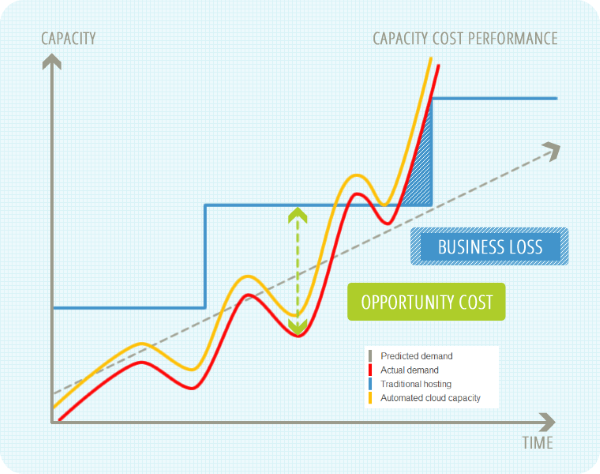Cloud Benefits
I was having coffee with a non-technical friend last week, and we got on the topic of cloud computing. The extent of his knowledge of the cloud ended at online tools like Mint.com and other services, like a-computer-hosted-at-a-location-other-than-my-work. Not too bad for a start.

After adding a bit of clarifying information around cloud computing, we got into some of the side benefits that some people don't tend to think about when considering the move to a cloud provider. This is not an exhaustive list, but more of a conversation starter.
- Improved Logistics - The time it takes to order a new server, get the purchase approved, wait for shipping, and, finally, perform the physical installation can take months. With a cloud solution, you can have your new server in minutes. In a day and age where physical server resources are at a premium - even with VMs - this feature is especially compelling.
- Reduced Computing and Storage Costs - With the cloud, you only pay for what you use, never more. Need a super computer for 24 hours? It's yours... There are a myriad of new physical products available to consumers today that would have been cost-prohibitive to produce without the cloud. Cloud services are even making the development of new lifesaving pharmaceuticals cost effective, improving the quality of life across the globe.
- Reduced Real-Estate Costs - Oh, the servers you needed six months ago finally came in? Great. Where are you going to put them? Hosting hardware is tedious, let someone else do it for you.
- Better Disaster Recovery - Most companies will tell you that they have a solid disaster recovery plan. I would wager that most of them don't. I can't tell you how many organizations I've consulted at, where their "disaster recovery" plan consisted of a few legacy servers in a dusty warehouse in the same county. Cloud platforms are geographically dispersed in world class data centers all around the world, creating an effective disaster recovery infrastructure for you.
- Automatic Data Replication - Creating a solid disaster recovery plan is not a trivial task - even if your systems are 100% cloud-based. However, cloud providers like Microsoft Azure make things a bit easier for you by automatically replicating your data across multiple data centers. This is done automatically for you, by default.
- Enhanced Security - What usually exists as an afterthought in most organizations is baked-in to every layer of a cloud platform. The major cloud providers have super-secure data centers - both virtually and physically - all over the globe with a robust level of compliance certifications to ensure that your data is secure at every level.

I am constantly surprised at the rapid pace of development that cloud providers are sustaining. Computing power is rising while prices are falling, new managed services are making our lives as product and software developers easier, and the barrier for entry is lowered almost daily.
The time to start investing in moving to the cloud is now. Whether it is introductory discussions, developer/operations training, or a full readiness assessment. The longer you wait to get started, the further behind you will be when you are forced to make a move due to physical, scale, geographical, or cost constraints.
Subscribe for Free
Want to stay ahead of the curve? Subscribe now to receive the latest updates, actionable insights, and thought-provoking ideas around business, technology, and leadership straight to your inbox.



